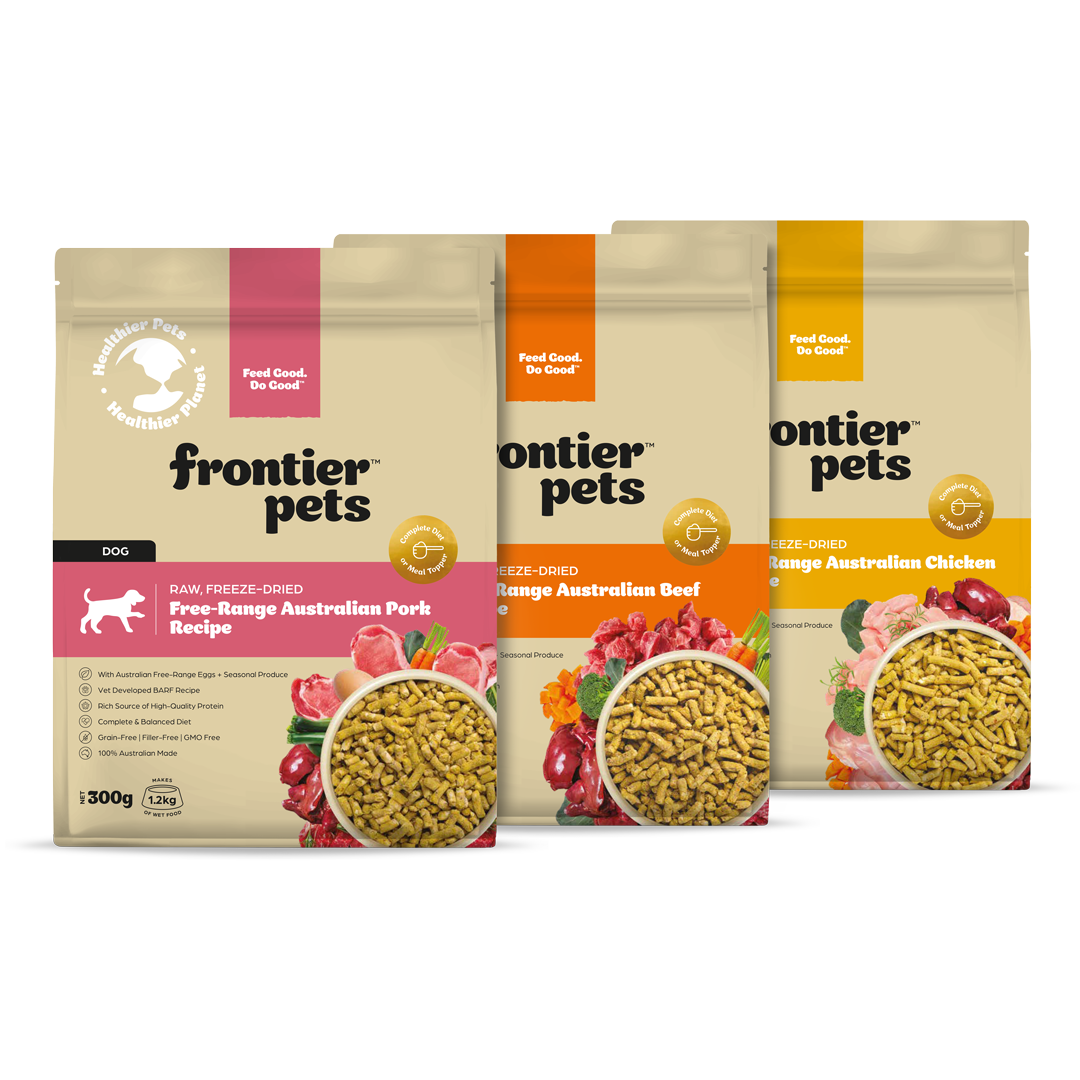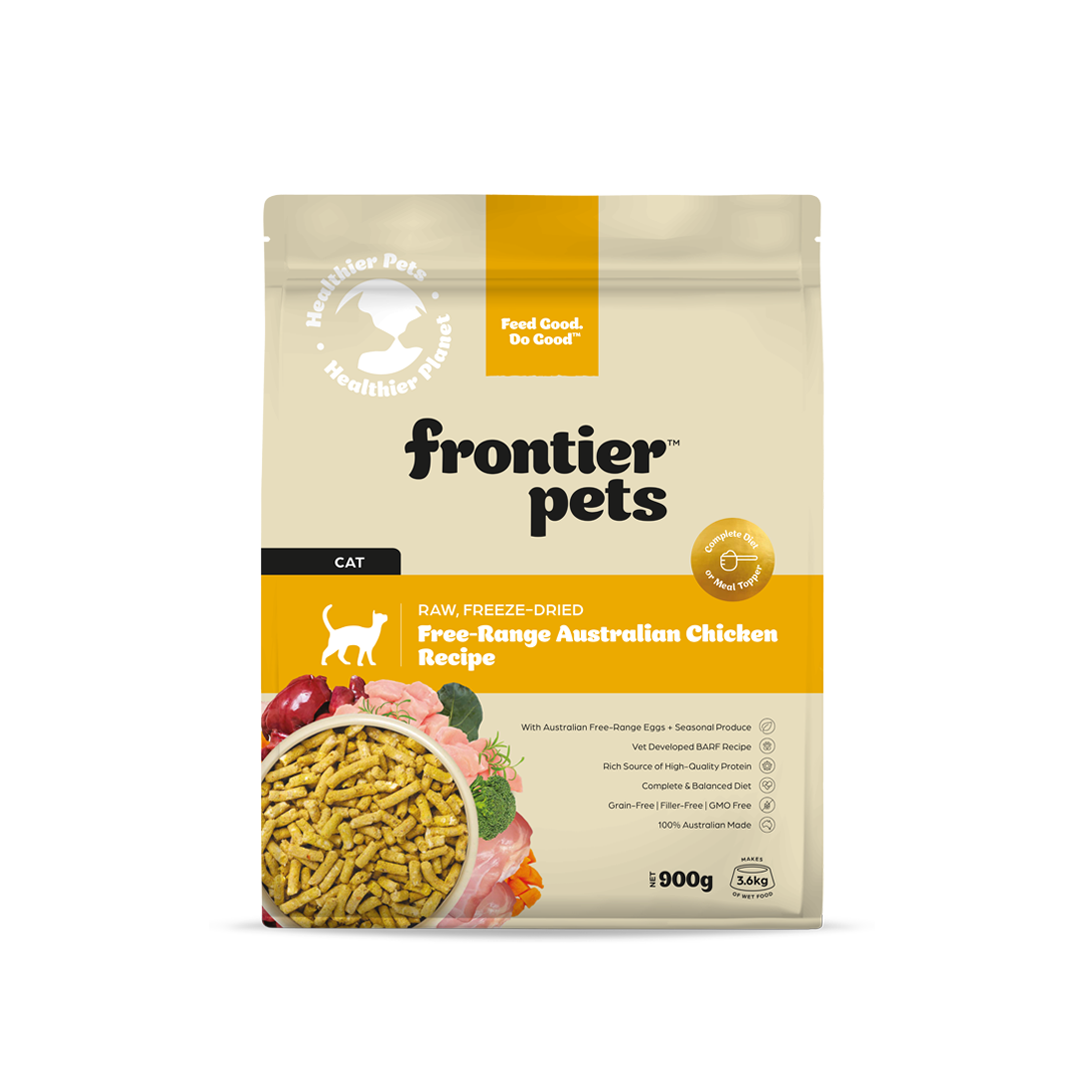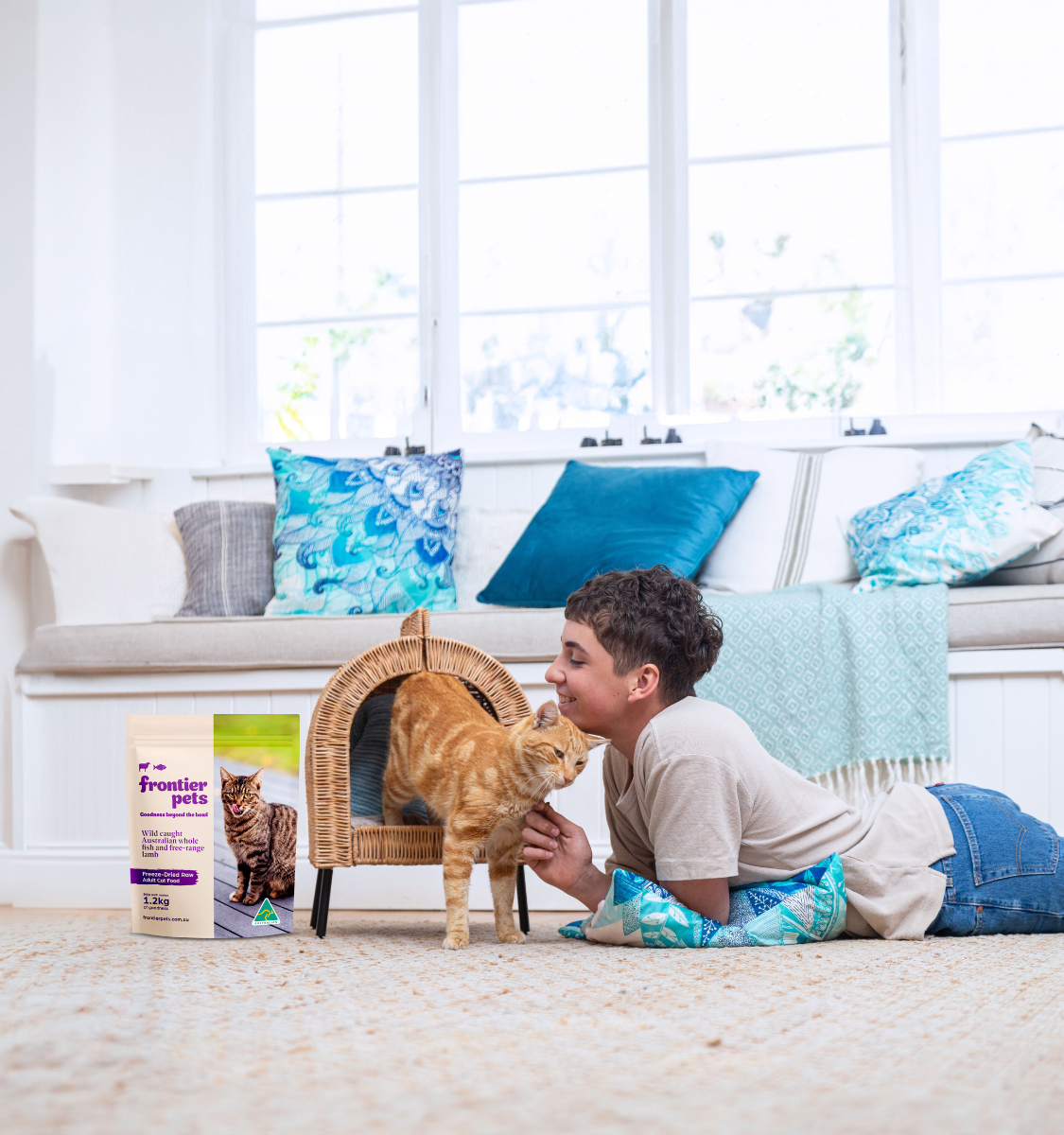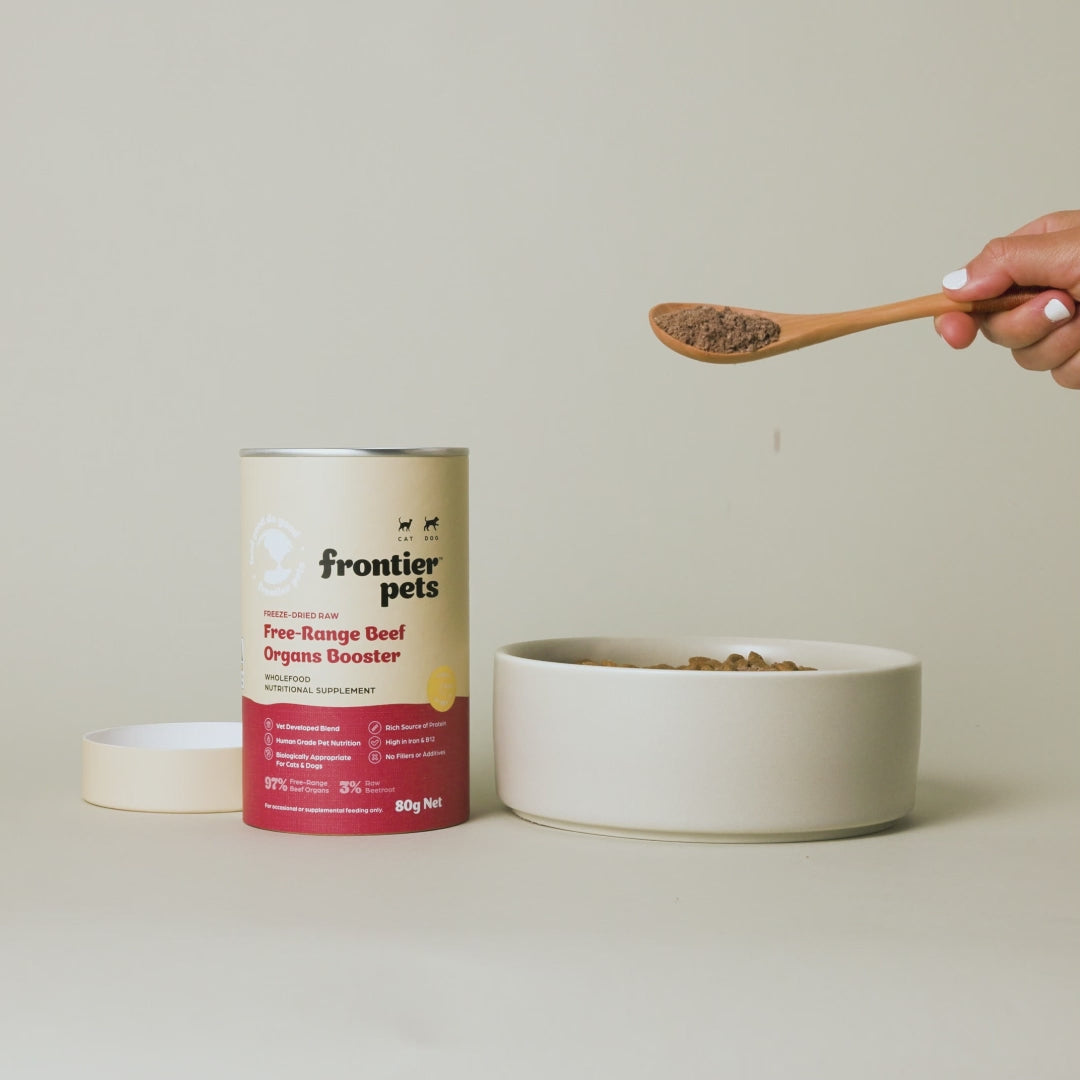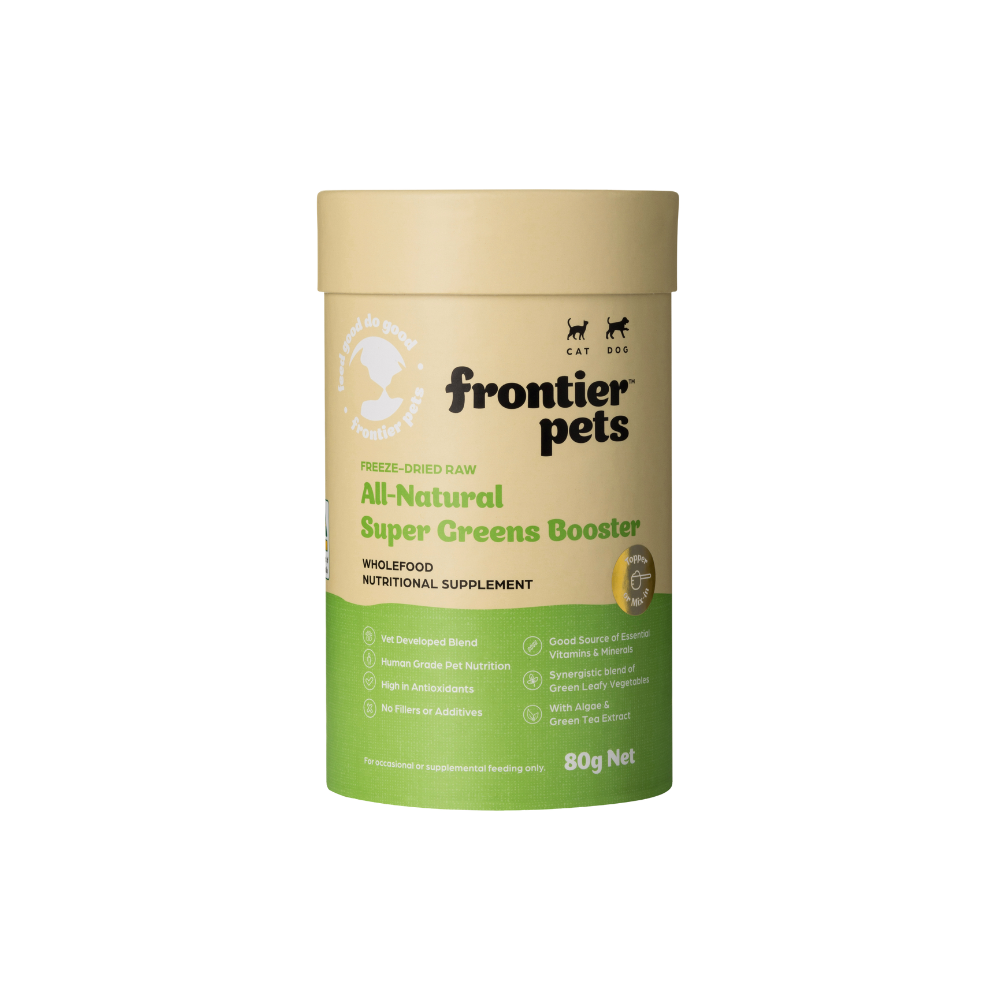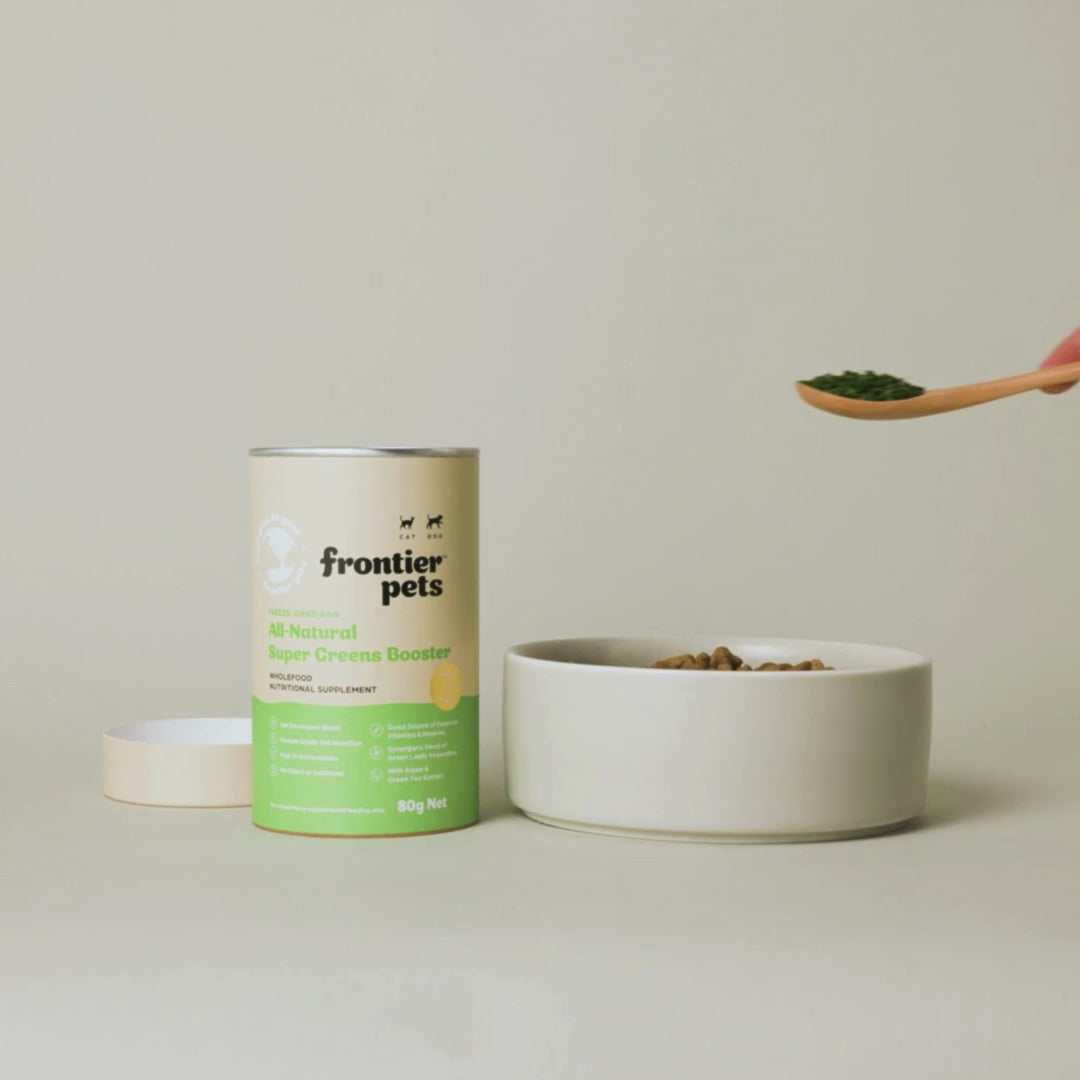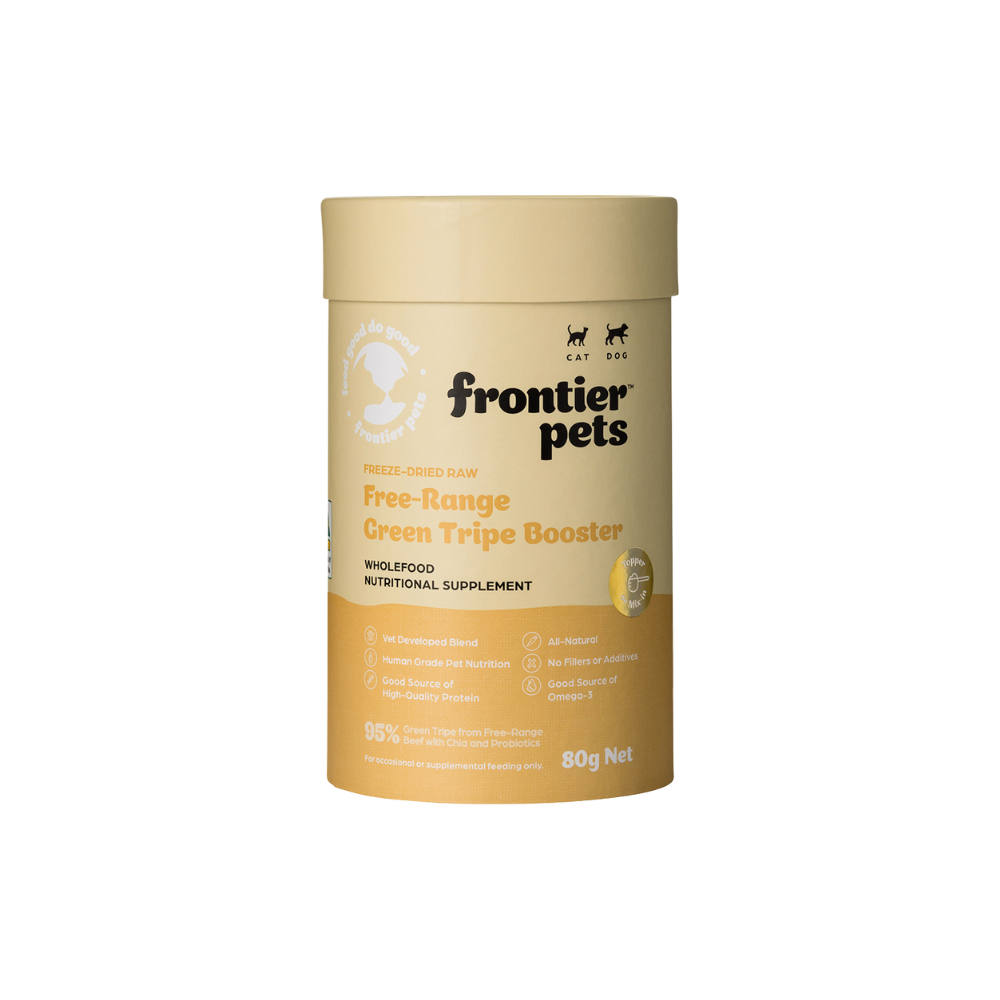Feeding Guides for Cats
Welcome to our product feeding guide for cats. These Daily Feeding Guides are a quick reference for the amount of Frontier Pets Freeze-Dried Raw food to feed your cat and kitten, based on their weight.
While our cat feeding guides and raw cat food recommendations offer a starting point, remember they're just that – a starting point. Factors like your pet's age, overall health, and activity level can influence their daily food needs. As their owner, you're in the best position to observe their appetite and adjust portions accordingly.
IMPORTANT: If your cat or kitten is new to raw feeding, don't forget you need to transition carefully. See our 'How To Transition to Raw Feeding'.
The following information is general advice, but as each pet is an individual, seek veterinary advice if you’re not confident or are concerned, particularly if you think your pet might have special dietary needs or has had a reaction to a standard or raw diet before.
![]() Free-Range Beef
Free-Range Beef
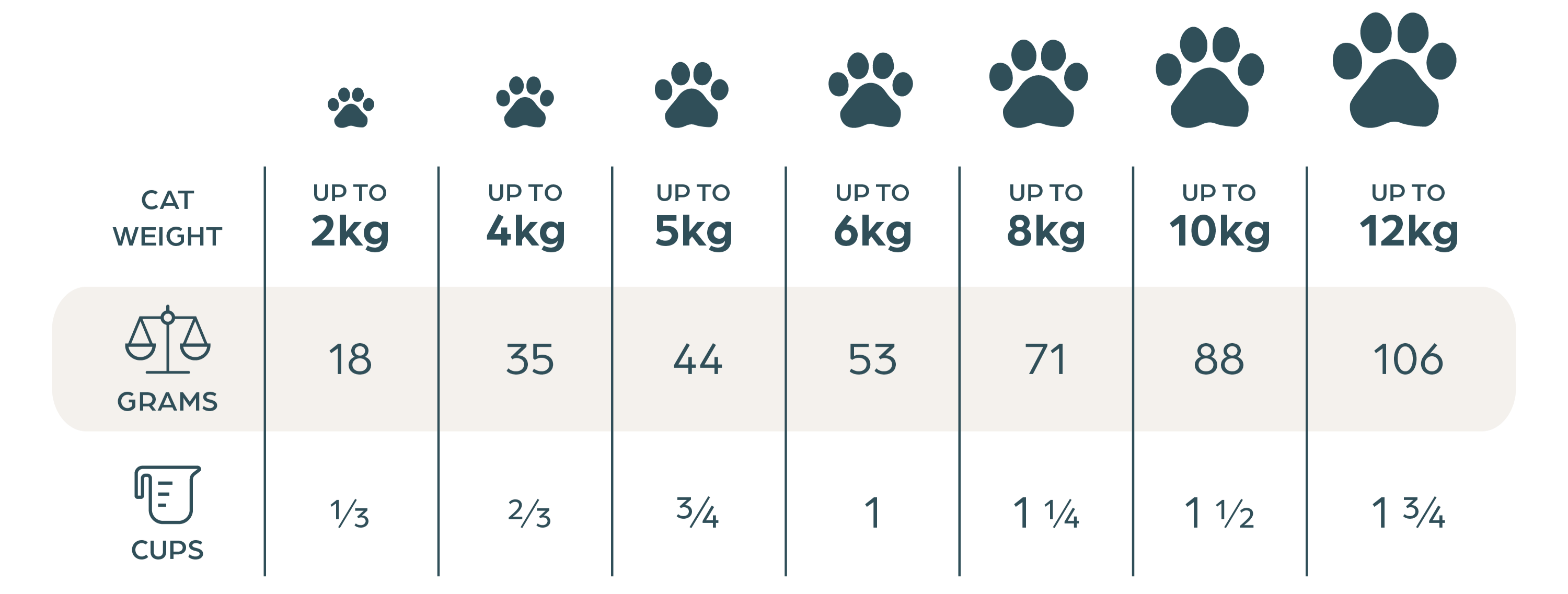
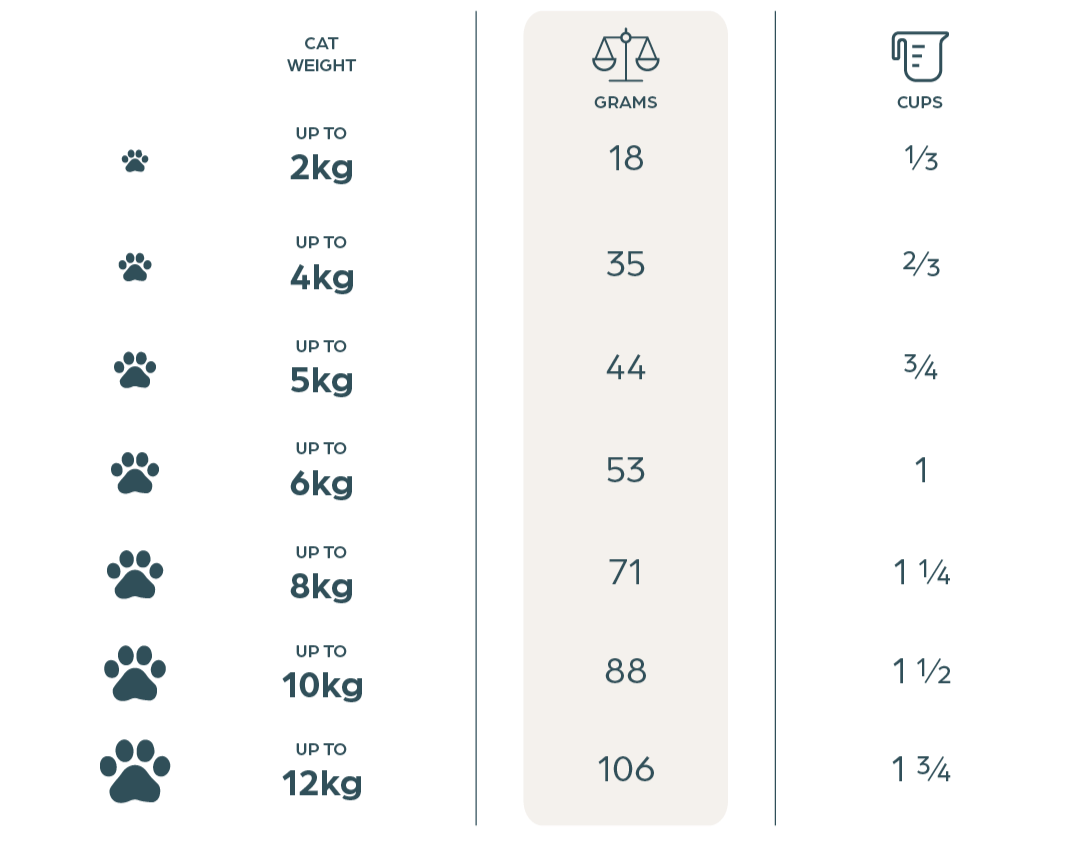
Metric measuring cup (250ml). 1 Cup = approximately 60 grams of dry food. This is a general advice only. Measurements are approximate. Adjust feeding amounts as necessary to maintain optimal weight. Complete and balanced, suitable for all life stages. For pregnant cat: Double the feeding quantities shown above.
 Lamb & Fish
Lamb & Fish
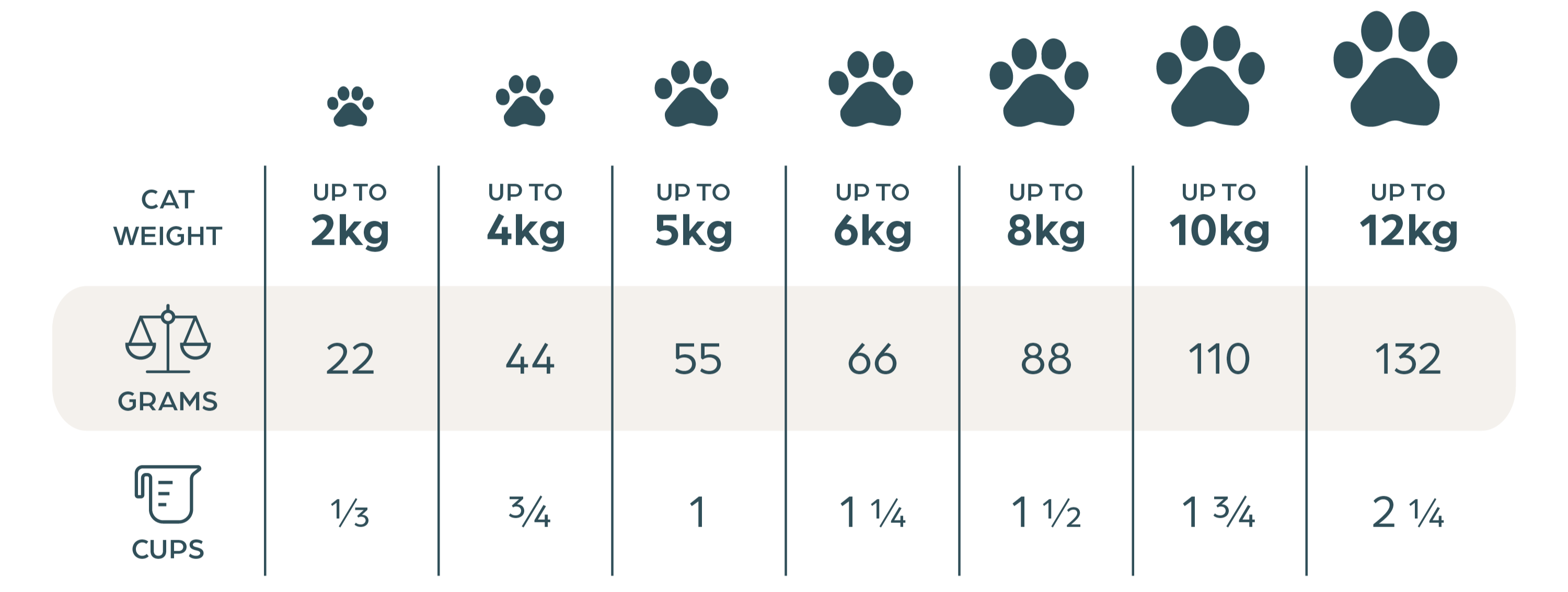
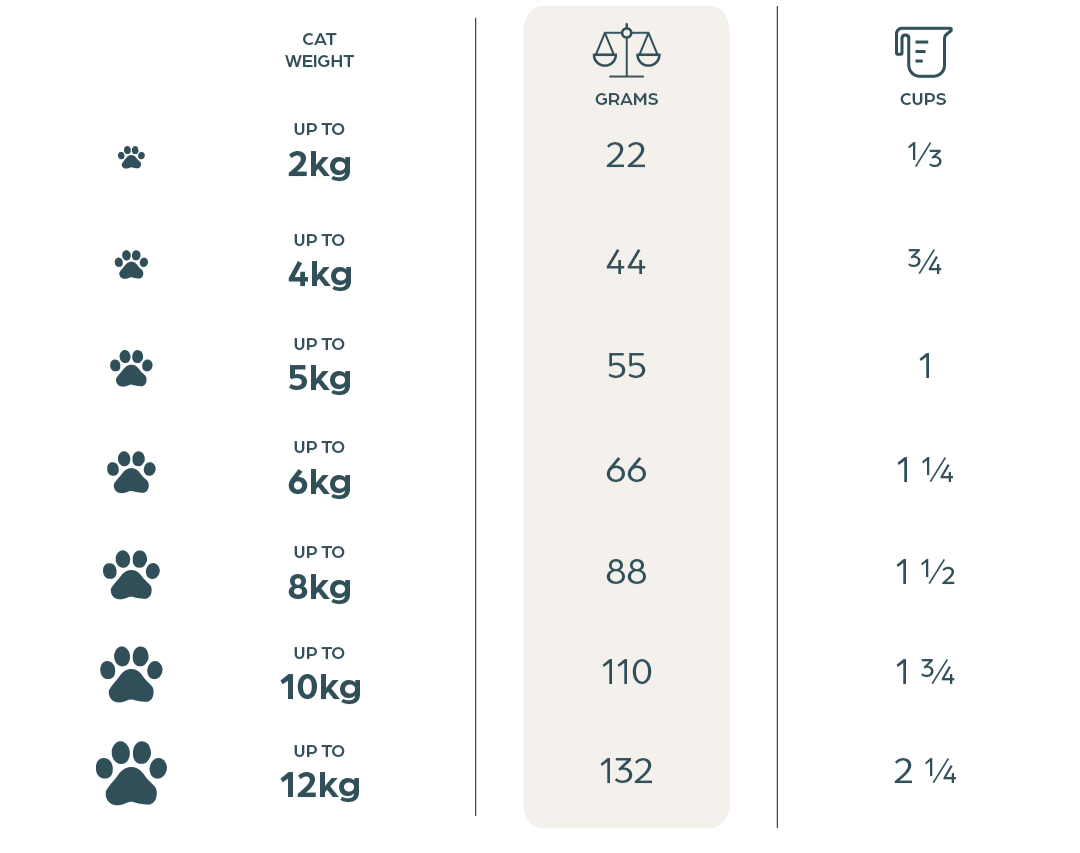
Metric measuring cup (250ml). 1 Cup = approximately 60 grams of dry food. This is a general advice only. Measurements are approximate. Adjust feeding amounts as necessary to maintain optimal weight. Complete and balanced, suitable for all life stages. For pregnant cat: Double the feeding quantities shown above.
Shop Cat Food
Try our best-sellers for cats! Shop the Lamb and Fish flavours today and treat your cat to the tastes they love!
Feeding your cat the right amount of food each day is crucial to their health and happiness. Since different protein sources have varying calorie densities, the ideal serving size can differ.
On average, adult cats should be fed between 25g to 50g of freeze-dried raw food per day, depending on their weight, activity level, and the protein source. Here’s a breakdown to help you figure out the right portion size:
- Up to 2kg: 25g to 30g per day
- Up to 4kg: 35g to 40g per day
- Up to 6kg: 45g to 50g per day
- Up to 8kg: 55g to 60g per day
- Up to 10kg: 65g to 70g per day
These amounts are based on an average adult cat with moderate activity levels. If your cat is particularly active, a kitten, or has special dietary needs, you might need to adjust these portions.
Not all proteins are created equal! For example:
- Fish-based proteins are typically leaner and might require a slightly larger portion to meet calorie needs.
- Beef or lamb-based proteins tend to be higher in calories and fat, so a smaller serving may be sufficient.
- Chicken-based proteins are often moderate in both fat and calories, making them a balanced choice.This variation is why we recommend checking the feeding guide on the specific product packaging or visiting our website for tailored advice based on the protein type
Frequently Asked Questions
It’s better not to for a variety of reasons.
Firstly, it is very unnatural to have cat food available all day and may predispose your cat to overeating and being overweight, which brings a whole host of problems.
Secondly, leaving food down all day can spoil or attract pests.
Thirdly, your cat doesn’t need food all day. It is better for digestion to have three or four small meals per day, which mimics a cat's natural feeding behaviour. While domestic cats are no longer strict solitary hunters, their digestive systems are still designed for a carnivorous diet—i.e., find a mouse and eat it!
Fourthly, leaving food out all day goes against a cat's natural instinct of "feast or famine”. It is important for digestion to have times of rest and repair. Digestion takes work.
Fifthly, let us not forget the Hunter Instinct for our little carnivorous hunters: The act of searching and consuming small meals can fulfil a cat's natural hunting drive and provide mental stimulation. This is important to keep your kitty happy and content.
It's important to note that this approach isn't always practical for every household. You can also adapt by scheduling meals with portion control to ensure your cat gets the right amount and type of food.
- Puzzle feeders or food dispensing toys to mimic the act of hunting and encourage natural foraging behaviours.
- High-quality, meat-based diets that cater to your cat's carnivorous nature.
- Ultimately, the best feeding plan considers your cat's individual needs and preferences. Consulting your veterinarian can help you create a strategy that promotes your feline's overall health and well-being.
This is not needed for healthy cats. If your cat has any health issues, please discuss them with your vet. For healthy cats, we recommend slowly changing to the new food over a 4-week period. Add a small amount of the new food to each meal during the transition phase.
There are several points to consider when thinking about feeding cats who are, by nature, obligate carnivores.
Firstly, they need a lot of protein from meat and other animal parts. When selecting a food, choose one with a high protein and low carbohydrate content: over 50% protein and 10% carbohydrates (or less).
Secondly, choose a food that has whole food, and real ingredients that sound like something a cat would eat naturally. Our food mimics their natural diet, the BARF (Biologically Appropriate Raw Food) diet, and includes more than 90% whole body parts of raw meat, bones, and organs from things like beef, chicken, lamb, and fish. Avoid foods that have a high proportion of unnatural cat foods, like cereal ingredients: wheat, corn, and rice.
As always, consult your veterinarian for specific dietary needs based on your cat's health.
No. Natural feeding principles dictate that variety over time is the best. Like seasonal eating, your cat may not always find the same food to eat, so it is good to offer them different things. Cats can become very fussy and get addicted to their favourite foods, providing variety guards against this. Various meals also add interest and excitement to their day and prevent boredom.
To combat rapid eating, consider slow feeder bowls or scattering dry food for a scavenger hunt effect. Portion control with smaller, more frequent meals is also recommended. Enrichment through puzzle feeders or pre-meal playtime can further deter scarfing behaviour. Providing other things to do to keep your cat occupied can greatly assist in adding more interest to their day and less reliance on food being the highlight.

